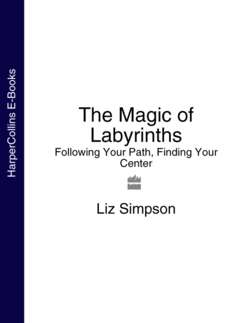Читать книгу The Magic of Labyrinths: Following Your Path, Finding Your Center - Liz Simpson - Страница 13
LABYRINTHS AND MYTH
ОглавлениеThe labyrinth has long been associated with myths and legends, the most direct link being with the story of Theseus and the Minotaur (see here). But why should we be interested in centuries-old accounts of the exploits of fictional gods, goddesses and heroes? More particularly, why would they hold any relevance to us today?
Mythology is populated by archetypal characters who illustrate universal dispositions with which each one of us can relate at various times in our lives. Despite the culture or period in which these mythological tales were written, each one of us recognizes in them universal values around being and behaving. Within an oral tradition, myths ensured the values of a culture were broadcast from generation to generation. They also helped explain fundamental but complex philosophical issues in a way that was more palatable and easily understood – through stories about the adventures and lives of gods and heroes.
For example, no concept intrigues, terrifies, and holds us in awe more than death. Death has been the subject of introspection and debate since the earliest times when bodies, whether of Egyptian pharaohs or Neanderthal nomads, were buried with everything they might need for their next journey, into the “land beyond.” We are fascinated by death from an early age when we ask, unsuccessfully, for confirmation of exactly what happens to us. I remember an occasion when we buried a goldfish in the back garden and my small son pressed me to tell him where it would go. Thinking I was being suitably spiritual in my instruction, I assured Graeme that the goldfish would go to heaven to be with God, only to find my son digging up the area the next day to check whether the fish had got there yet.
The labyrinth is typically associated with dark caves, the inner workings of our subconscious and the way in which we must constantly review our attitudes and behaviors so that we “kill off” any that are no longer useful to us in order to resurrect or discover ones that are. Not surprisingly, the labyrinth motif has been woven into a number of myths concerning death. Such myths also elaborate on the key role of women in the human experience. For example, Joseph Campbell relates the myth of the Malekula islanders in Vanuatu (formerly the New Hebrides) in the South Pacific who learn that their approach to the Land of the Dead will be halted by a female guardian. She draws a labyrinth design in the earth, then erases half of it and the soul’s task is to complete the design perfectly before they will be allowed to pass through to the underworld. If they do not, then they will be eaten by her.
Unlike mazes with their dead ends, labyrinths are reminiscent of coiled snakes. According to the Hindu tradition, Kundalini is the serpent goddess who awakens whenever an individual embarks upon a spiritual journey. As they proceed on their path, overcoming challenges in the way of the hero, Kundalini journeys upwards, piercing each chakra in turn until, reaching the crown chakra, the subject is said to have achieved spiritual enlightenment. (For more on this, see here.)
